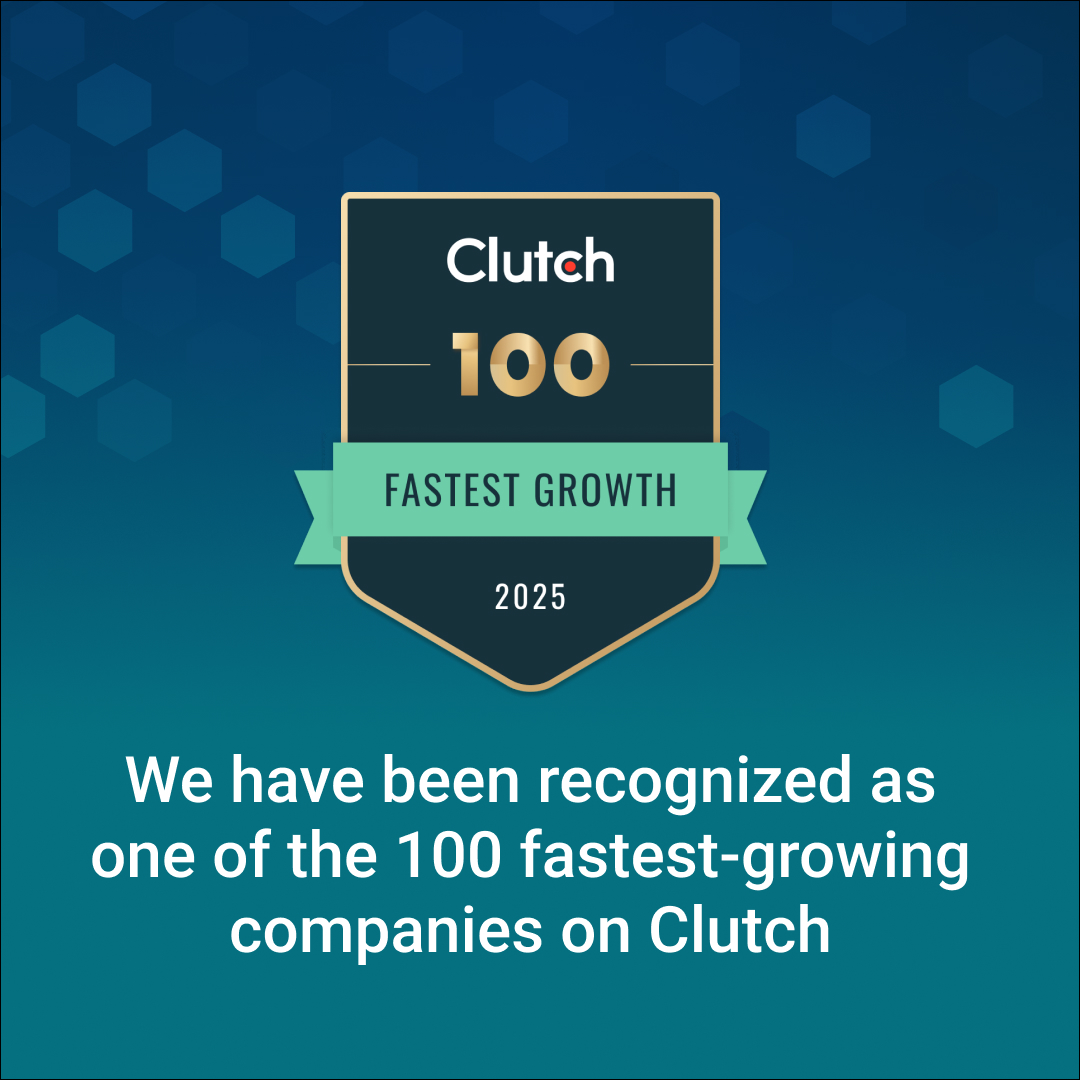Introduction
The intersection of genomics and precision medicine has emerged as a transformative force, reshaping the way we understand and approach medical care in this rapidly evolving landscape of healthcare. Amid this transformative landscape, Amazon Web Services (AWS) stands out as a key enabler, providing a robust and scalable infrastructure to support genomics research and data analysis. As we embark on this exploration, we delve into the profound significance of decoding the genetic blueprint, understanding its impact on healthcare, and the transformative role of Amazon Web Services (AWS) in this genomics journey. Let’s unravel the strands of AWS’s genomics capabilities, where each service is meticulously designed to handle the complexities of large-scale datasets and intricate analyses
AWS Services for Genomics
Genomic research demands a robust infrastructure, and AWS delivers purpose-built industry solutions that cater specifically to the complexities of genomics workflows. These solutions represent a meticulously curated portfolio of validated AWS and AWS Partner services, empowering researchers with the tools needed to expedite genomic discoveries
Imagine a realm where the language of DNA is translated into meaningful insights, where the complexities of genetic information are seamlessly managed, and groundbreaking discoveries are made possible with a click. As we venture into this realm, AWS unveils itself as not just a platform but a key enabler of scientific breakthroughs. Let’s have a brief look at its outstanding possibilities:
Data Transfer and Storage
In the intricate landscape of genomics, where data reigns supreme, AWS takes the helm in facilitating seamless data transfer and storage. With a commitment to security and efficiency, AWS employs innovative technologies that go beyond mere storage. It orchestrates a symphony of data management, ensuring that genomics data, often vast and intricate, finds a secure abode within the AWS infrastructure.
The platform’s capabilities extend beyond conventional storage mechanisms. AWS tackles the complexities inherent in large-scale genomics datasets, providing a robust framework for data transfer that aligns with the specific needs of genomics researchers. This entails not just storage but a dynamic orchestration of data movement, acknowledging the nuances of genomics research where each piece of data is a potential building block for groundbreaking discoveries.
Secondary Analysis
Genomics research transcends the decoding of DNA sequences; it delves into the nuanced layers of secondary analysis. AWS stands as a stalwart companion in this journey, offering a robust ecosystem for researchers to unravel the intricacies hidden within genomic data.
Secondary analysis in genomics involves a meticulous examination of data beyond the primary sequencing stage. It’s the phase where meaningful patterns emerge, and AWS’s capabilities play a pivotal role. Researchers can delve into profound analyses, extracting insights that might be obscured in the raw genomic data. With AWS, secondary analysis becomes a voyage of discovery, shedding light on the intricacies of genetic information.
Data Aggregation and Governance
In the realm of genomics, where precision is paramount, AWS goes beyond data storage to ensure data integrity and governance. Genomics data, often distributed across diverse sources, needs a harmonious orchestration to maintain its quality and reliability.
AWS provides a suite of tools designed for effective data aggregation, acknowledging the intricate nature of genomics datasets. The platform’s governance tools ensure that each piece of data adheres to predefined standards, fostering a cohesive environment where researchers can trust the integrity of the information they work with. This commitment to data governance not only streamlines research processes but also lays the foundation for reliable and reproducible genomics insights.
Tertiary Analysis and Machine Learning (ML)
As genomics research advances, so does the need for computational prowess. AWS integrates tertiary analysis and machine learning (ML) into its genomics repertoire, unlocking advanced capabilities for researchers. This synergy between genomics and cutting-edge technology empowers researchers to go beyond conventional analyses.
Tertiary analysis involves a deeper dive into the genomic landscape, exploring patterns, correlations, and potential markers that might elude traditional analytical approaches. With AWS’s integration of ML, genomics researchers gain access to algorithms capable of recognizing intricate patterns and making connections that might not be immediately apparent. This intersection of genomics and ML amplifies the analytical depth, paving the way for more nuanced and insightful discoveries.
Clinical Genomics
In the dynamic field of clinical genomics, the transition from research findings to practical applications is a critical bridge. AWS doesn’t just stop at empowering research; it extends its capabilities to facilitate the translation of genomic insights into actionable clinical decisions.
Clinical genomics on AWS becomes a continuum, seamlessly connecting the realms of research and practical applications. The platform provides solutions that navigate the complexities of translating genomic discoveries into tangible outcomes. Whether it’s identifying potential therapeutic targets or customizing treatment plans based on individual genomic profiles, AWS plays a pivotal role in bringing the promises of genomics to the forefront of clinical decision-making.
Collaborative Research and Case Studies
1. AstraZeneca

Around two decades post the groundbreaking publication of the human genome, AstraZeneca is at the forefront of transitioning genomics from research-intensive to a driving force in personalized medicine. With a commitment to transforming drug discovery, AstraZeneca leverages petabytes of genomic sequencing data, necessitating a rapid and scalable solution.
AstraZeneca aimed to glean insights from genomic data swiftly, reallocating resources to scientific exploration and minimizing time spent on low-value data management activities. The challenge was handling bursts of petabytes of data collected from multiple sources efficiently.
To address this, AstraZeneca expanded its use of AWS tools, building a cloud-based bioinformatics solution for rapid genomic processing and analytics. The high-throughput solution leverages AWS Lambda for serverless compute, AWS Batch for optimal resource provisioning, and Amazon S3 for data storage. This architecture automates the intricate steps of genomic data processing and analysis.
The AWS-powered solution allowed AstraZeneca to run over 51 billion statistical tests in under 24 hours, providing crucial insights for drug discovery. This rapid, efficient genomics bioinformatics pipeline has empowered AstraZeneca’s scientists, giving them the time and resources to pursue innovation. AstraZeneca’s Centre for Genomics Research is now on track to analyze two million genomes by 2026.
Some of the AWS services used in this collaboration:
- AWS Lambda: Serverless compute service for code execution without server management.
- AWS Batch: Efficiently runs hundreds of thousands of batch computing jobs.
- Amazon S3: Object storage service offering scalability, data availability, security, and performance.
2. National Library of Medicine

AWS and the National Library of Medicine’s National Center for Biotechnology Information (NCBI) announce a transformative collaboration, making the Sequence Read Archive (SRA) freely accessible on Amazon S3 through the Open Data Sponsorship Program (ODP). This groundbreaking initiative revolutionizes genomics research and significantly enhances the accessibility and utility of one of the world’s largest repositories of raw next-generation sequencing data.
Established in 2009 as part of the International Nucleotide Sequencing Database Collaboration (INSDC), the SRA stands as the NIH’s primary repository for raw next-generation sequencing data. Hosting over 36 petabytes of sequence data from 2007, representing sequencing from over 9 million experiments, the SRA is crucial for scientific validation, expanding effective sample populations, and testing new pipelines.
Moving the SRA to the ODP provides a streamlined approach to access and retrieve SRA data, offering unprecedented simplicity for researchers. AWS users can leverage Amazon Athena to query the SRA metadata bucket or directly interrogate the SRA bucket for specific submissions, enhancing cloud-based genomics workflows.
Direct access to SRA data as S3 objects enables scalable and cloud-native tooling for processing and analyzing genomics datasets. This approach promotes more reproducible workflows, reduces the need for data duplication, and facilitates global research collaborations.
This collaboration adds the SRA to the list of key biomedical and genomics datasets available on AWS, joining the ranks of TCGA, ICGC, Gabriella Miller Kids First, and others. The AWS Open Data Sponsorship Program continues to democratize access to high-value datasets, fostering innovation and community development.
As the SRA begins its transition, AWS has already made 250 TB of coronavirus genome sequence data available on AWS ODP. Researchers can explore this data on AWS and stay informed about further resources and releases in the coming months.
3. Lifebit

Thorben Seeger, Chief Business Development Officer at Lifebit, shares insights into the company’s mission. Lifebit empowers biomedical data owners to make their data findable and usable securely, facilitating accelerated therapeutic breakthroughs. Their federated data platform addresses the challenges of accessing highly sensitive and vast genomic datasets, ensuring data custodians retain control while enabling researchers to glean valuable insights.
Large-scale population genomics programs, exemplified by initiatives like Genomics England’s 100,000 Genomes Project, play a crucial role in transforming precision medicine. Thorben highlights the positive impact on patients receiving accurate diagnoses for rare diseases and the pharmaceutical industry’s increased likelihood of regulatory approval for drugs based on large genetic evidence.
Thorben identifies key challenges researchers and organizations face in accessing large-scale genomic datasets. These challenges include technical constraints due to massive dataset sizes, security and privacy concerns associated with sensitive genomic data, and the complexity arising from differing technology standards across datasets.
Thorben explains how federated data systems address these challenges by allowing in-situ analysis without moving data, ensuring data custodians maintain control. He emphasizes the importance of a security-by-design approach, offering authorized access, differential privacy, and adherence to local governance and legal regulations.
Lifebit’s federated data platform, Lifebit CloudOS, is introduced as a trusted research environment. This platform connects and interlinks clinical and genomic data silos, enabling computational analysis where the data resides. Thorben details how Lifebit CloudOS automates data transformation, ensuring faster insights and intuitive tools for data exploration.
Thorben highlights the critical role of cloud technology and specifically AWS in enabling Lifebit’s platform. AWS provides scalable infrastructure, global data center presence, robust security features, and advanced analytics capabilities. The collaboration with AWS allows Lifebit to offer secured access with granular controls and apply advanced analytics powered by machine learning and AI.
Lifebit leverages aligned technologies like NVIDIA Clara Parabricks on AWS to accelerate pipelines. The combination of AWS-hosted GPUs and Clara Parabricks proves powerful for large-scale genomic data processing, offering speed and affordability crucial for institutions with budget considerations.
Thorben envisions a future where federated data ecosystems play a transformative role, with over 60 million patients expected to have their genomes sequenced by 2025. Federated analysis, coupled with data standardizations like the OMOP common data model, holds the potential to revolutionize not only genomics but also clinical healthcare data analysis.
Conclusion
As we navigate the complexities of genomics, AWS emerges as the linchpin, offering a purpose-built infrastructure that transcends conventional boundaries. From seamless data transfer and storage to advanced analytics and machine learning, AWS stands at the forefront of empowering researchers to unravel the intricacies of the genetic code.
Here at SmartDev, we believe the true synergy lies in the proficiency in harnessing AWS services. SmartDev us all believe that we prove you with solutions that are not just scalable and cost-effective but also are a testament to a team of seasoned professionals committed to excellence. SmartDev’s offerings are a bridge between the vast potential of AWS and the nuanced requirements of genomic research.
Contact us today at [email protected] to explore how our AWS expertise can propel your genomic research to new heights. Let’s decode the DNA of innovation together and shape the future of healthcare.








